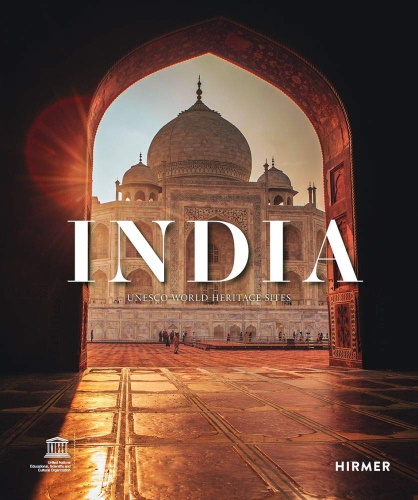Blog Books
Book: India: UNESCO World Heritage Sites
India: UNESCO World Heritage Sites was published in August 2021. This book, covering all Indian WHS up to and including 2019, is a must for every India enthusiast and WH book collector. One can only hope that it inspires other larger countries with a wide geographical spread of WHS to compile similar books; I am especially thinking of Canada or Argentina.

How it looks
When the delivery guy brought the book to my door, I was surprised that it wasn’t especially large or heavy. It probably would have fitted into the mailbox. The hardcover edition has 240 pages and measures 25 by 30 cm. It has been written by Indian scholars and conservationists with insider information (such as a former WHC member) and is endorsed by UNESCO (its logo features on the cover).
The 38 WHS covered are split between cultural, natural, and mixed sites. Each section has an explanatory essay about the subject, eg. “From rock shelter to stupa and temple”. The cultural sites have multiple of those. Each WHS is portrayed in 4 dedicated pages, including glossy photos but also reproductions of 18th-century paintings and photos from around 1900. There is an overview map where the spread across the country can be seen. The quality of the print is very clear.
Qualities of the book
What I especially liked:
-
The selection of the images is excellent – not only in the general quality of the pictures but also in highlighting certain important aspects.
-
The texts are easy to read, but not dumbed down. I was able to write down a few new connections from it, such as that Jaipur was named after an individual person.
-
All WHS are treated equally.
-
The essays as an introduction to the subjects covered by the WHS are a bonus.
-
It’s a coherent whole, as it weaves all WHS into one story of India’s history.
I can’t really think of any cons. Maybe it is too short – they could have easily doubled the number of pages dedicated to each WHS.

India's WHS and the Global Strategy
While reading this book, my mind wandered to planning future trips to India (must really go to the natural sites!). But I also kept thinking about India’s current list of WHS and its Tentative List. India has actively participated in the WH convention from its beginnings and ratified it in 1977. It got its first WHS in 1983. The text refers to the Global Strategy, and how India from 2010 on also has tried to move away from its more classic Hindu empires and Mughal nominations towards cultural landscapes and modern industrial/scientific/technological sites.
There seems to be a lot of competition within India between the federal states to get their sites inscribed, which may be an obstacle to this changing nomination strategy. Just this week India has added 3 new sites to its Tentative List, of which 2 clearly fit into these categories (a prehistoric landscape and a continuing cultural landscape), while the temple at Lepakshi can be considered more of the same (covers the same era as Hampi). Looking at the 2 inscriptions from the 2020/2021 WHC (Dholavira: A Harappan City and Rudreshwara (Ramappa) Temple) and the (likely) candidates for 2022, 2023, and 2024 Santiniketan, Sacred Ensembles of the Hoysala, and the Mughal Gardens in Kashmir, only 20th century Santiniketan seems to meet India's own Global Strategy goals.
Els - 3 April 2022
Comments
Esteban Cervantes Jiménez (vantcj1) 4 April 2022
Seems a very interesting read. It seems very balanced in terms of form/content.
By the way, the book that you gave me on WHS in the Netherlands was a read that I really enjoyed. Thank you again for the kindness.
Astraftis 3 April 2022
Just a (pedantic?) detail: it is nice to always have directly the site of the editor for a book, in this case: https://www.hirmerverlag.de/eu/titel-3-3/india-2055/
The only con might be that as beautiful as it is, it is a rather costly book! :-D
Astraftis 3 April 2022
Nice! You know that you are contributing to more fatigue for my bookshelves, Els, right? Don't you feel guilty? :-)